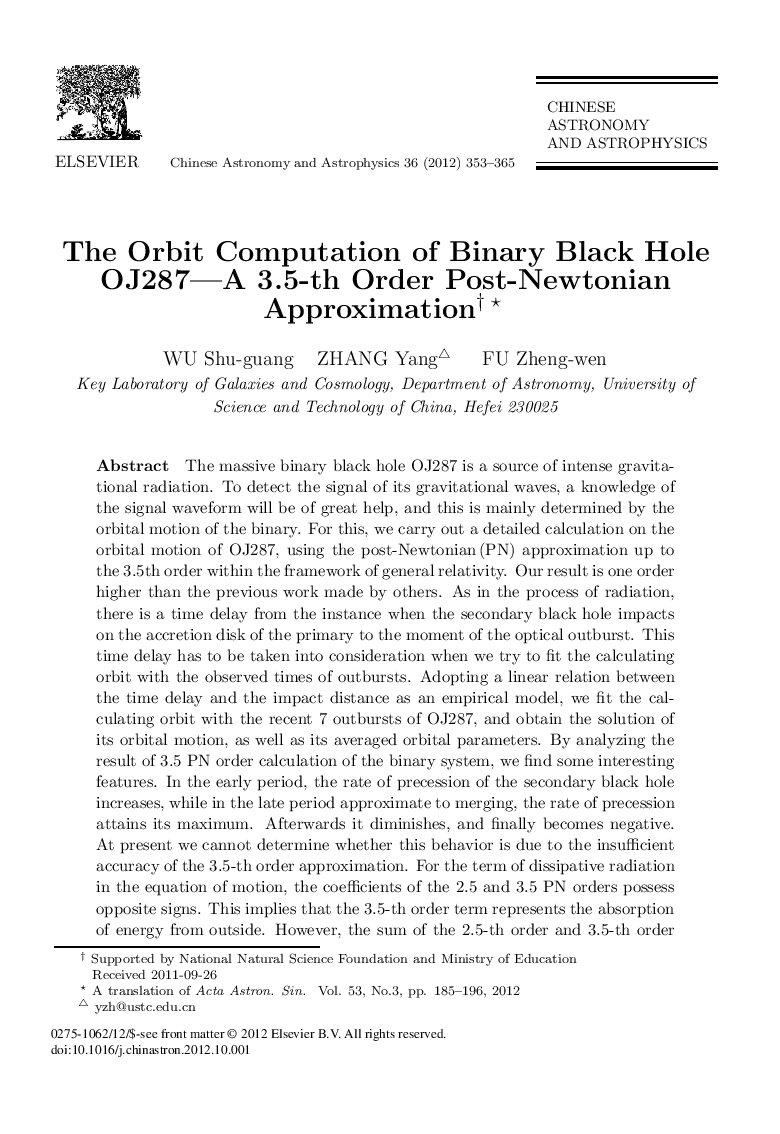| Article ID | Journal | Published Year | Pages | File Type |
|---|---|---|---|---|
| 1771886 | Chinese Astronomy and Astrophysics | 2012 | 13 Pages |
The massive binary black hole OJ287 is a source of intense gravita- tional radiation. To detect the signal of its gravitational waves, a knowledge of the signal waveform will be of great help, and this is mainly determined by the orbital motion of the binary. For this, we carry out a detailed calculation on the orbital motion of OJ287, using the post-Newtonian (PN) approximation up to the 3.5th order within the framework of general relativity. Our result is one order higher than the previous work made by others. As in the process of radiation, there is a time delay from the instance when the secondary black hole impacts on the accretion disk of the primary to the moment of the optical outburst. This time delay has to be taken into consideration when we try to fit the calculating orbit with the observed times of outbursts. Adopting a linear relation between the time delay and the impact distance as an empirical model, we fit the cal- culating orbit with the recent 7 outbursts of OJ287, and obtain the solution of its orbital motion, as well as its averaged orbital parameters. By analyzing the result of 3.5 PN order calculation of the binary system, we find some interesting features. In the early period, the rate of precession of the secondary black hole increases, while in the late period approximate to merging, the rate of precession attains its maximum. Afterwards it diminishes, and finally becomes negative. At present we cannot determine whether this behavior is due to the insuffcient accuracy of the 3.5-th order approximation. For the term of dissipative radiation in the equation of motion, the coeffcients of the 2.5 and 3.5 PN orders possess opposite signs. This implies that the 3.5-th order term represents the absorption of energy from outside. However, the sum of the 2.5-th order and 3.5-th order terms still behaves as radiating gravitational waves outward, the rate of energy variation of the system is negative. The calculated result of this work may be useful for more accurate calculations of the gravitational radiation of OJ287.
